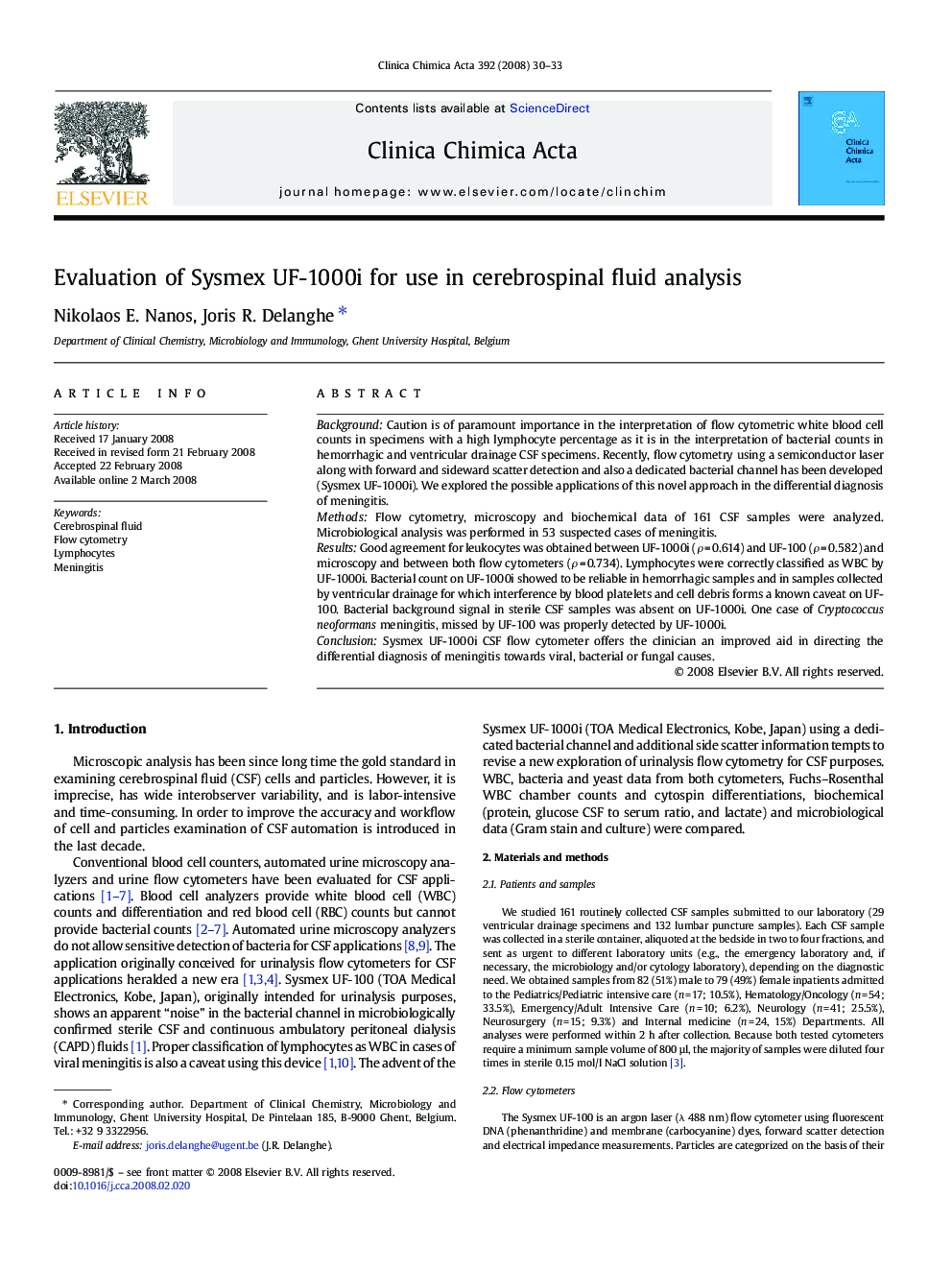| Article ID | Journal | Published Year | Pages | File Type |
|---|---|---|---|---|
| 1966977 | Clinica Chimica Acta | 2008 | 4 Pages |
BackgroundCaution is of paramount importance in the interpretation of flow cytometric white blood cell counts in specimens with a high lymphocyte percentage as it is in the interpretation of bacterial counts in hemorrhagic and ventricular drainage CSF specimens. Recently, flow cytometry using a semiconductor laser along with forward and sideward scatter detection and also a dedicated bacterial channel has been developed (Sysmex UF-1000i). We explored the possible applications of this novel approach in the differential diagnosis of meningitis.MethodsFlow cytometry, microscopy and biochemical data of 161 CSF samples were analyzed. Microbiological analysis was performed in 53 suspected cases of meningitis.ResultsGood agreement for leukocytes was obtained between UF-1000i (ρ = 0.614) and UF-100 (ρ = 0.582) and microscopy and between both flow cytometers (ρ = 0.734). Lymphocytes were correctly classified as WBC by UF-1000i. Bacterial count on UF-1000i showed to be reliable in hemorrhagic samples and in samples collected by ventricular drainage for which interference by blood platelets and cell debris forms a known caveat on UF-100. Bacterial background signal in sterile CSF samples was absent on UF-1000i. One case of Cryptococcus neoformans meningitis, missed by UF-100 was properly detected by UF-1000i.ConclusionSysmex UF-1000i CSF flow cytometer offers the clinician an improved aid in directing the differential diagnosis of meningitis towards viral, bacterial or fungal causes.
